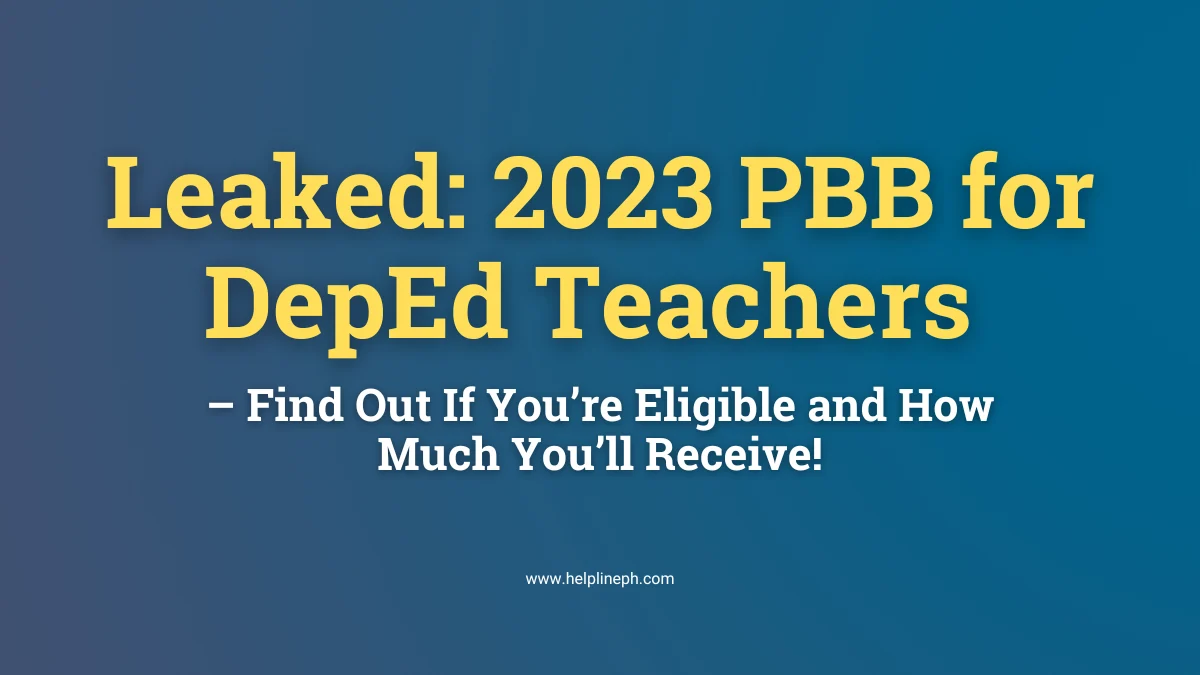DepEd senior high curriculum is about to see one of its biggest changes since the K to 12 program began. On April 4, 2025, the Department of Education (DepEd) released the draft for a new senior high school curriculum, and it’s now open for public feedback until April 11.
The major headline? The number of core subjects is being cut down from 15 to just 5, and the strand system—which has been around since 2016—might be going away for good.
Let’s break down what’s happening, why it matters, and what students, teachers, and parents need to know.
Why the Change?
For years, the senior high program has been criticized. Many said it was too full of subjects, didn’t give students enough time to master important skills, and left them feeling unprepared for either work or college.
DepEd agreed. In their official draft, they said the old curriculum was “overly fragmented” with “too many subjects, limited elective options, and inadequate instructional time.”
So now, they’re responding with a simpler, more focused, and more flexible setup.
The New Core Subjects: Down from 15 to Just 5
Here are the five core subjects that all senior high students will take, regardless of track:
1. Effective Communication (Mabisang Komunikasyon)
This combines all the language and communication subjects into one. It helps students improve in English, Filipino, and general communication skills.
2. Life Skills
This includes personal development, values, and physical education. It’s designed to help students with mental health, fitness, and character-building.
3. General Mathematics
Instead of splitting math into different types each semester, this subject brings them all together in one year-long course.
4. General Science
This merges Earth Science, Life Science, and Physical Science. It gives a more complete science education over one full year.
5. History and Philippine Society (Pag-aaral ng Kasaysayan at Lipunang Pilipino)
This covers history, culture, and how society works in the Philippines.
Each of these five core subjects will be taught throughout the full school year, with 160 hours of instruction each. This gives students more time to understand what they’re learning.
What’s Happening to the Tracks and Strands?
The current system has four tracks:
- Academic
- Technical-Vocational-Livelihood (TVL)
- Sports
- Arts and Design
Under the proposed DepEd senior high curriculum, this will be cut down to just two tracks:
Academic Track
This now includes electives from arts, design, and sports—giving students more choices.
Technical-Professional (TechPro) Track
This replaces the old TVL track and focuses on technical skills and job readiness.
Schools don’t have to offer both tracks. They can choose based on their teachers, space, and resources.
Goodbye to Strands?
Here’s the big news: no more strands.
In the old system, students were locked into strands like STEM, ABM, HUMSS, or GAS. But in the new setup, these are being replaced with flexible elective clusters. DepEd wants students to build their own subject path based on what they want to do after high school—not just what track or strand they chose at the start.
This is called the “doorway option,” where students choose electives based on their career goals, not their original strand.
What Are Elective Clusters?
Electives are now grouped into nine clusters. Students can choose subjects from one or more clusters. Schools don’t need to offer all electives—they can focus on what they’re equipped to teach.
Here are the nine elective clusters:
- Arts, Social Sciences, and Humanities
- Business and Entrepreneurship
- Science, Technology, Engineering, and Mathematics (STEM)
- Sports, Health, and Wellness
- Field Experience
- Agriculture and Fishery Arts
- Information and Communication Technology
- Family and Consumer Science
- Industrial Arts and Maritime
For example, a student interested in engineering could still take a few business or ICT electives, depending on their goals.
Time Allocation for Each Subject
DepEd is also updating how time is managed in school:
- Core Subjects: 160 hours across the school year
- Academic Electives: 80 hours per semester
- TechPro Electives (Grade 11): 320 hours for the year
- TechPro Electives (Grade 12): 320 hours in one semester
- Field Experience: 160–320 hours in one semester
These changes are meant to give students more meaningful learning experiences, and help them prepare better for either work or further studies.
When Will This Start?
The pilot test for the new curriculum will begin in School Year 2025–2026. If it goes well, DepEd plans to roll it out fully by 2026–2027.
The public is invited to give feedback until April 11, 2025. Comments and suggestions can be sent through this official link:
👉 bit.ly/SHSPublicConsultationPlatform
What This Means for Students
This is not just a schedule change. It’s a major shift in how students can build their own learning path. Removing strands and cutting down subjects means:
- More focus on what matters
- Less stress from overloaded schedules
- More flexibility for different goals
Whether a student wants to go to college, start a business, or get a job right away, they can now choose subjects that support that plan.
Frequently Asked Questions (FAQs)
What’s the biggest change in the new SHS curriculum?
The biggest change is cutting core subjects from 15 to 5 and removing the fixed strand system.
Are strands like STEM and ABM still available?
No. Instead of strands, students now choose electives from nine clusters based on their personal goals.
Will all schools offer both new tracks?
No. Schools can decide which track to offer depending on their resources.
When will this be implemented?
Pilot testing starts in School Year 2025–2026. Full implementation may happen in 2026–2027.
Can students mix electives from different clusters?
Yes! Students can choose subjects from multiple clusters to match their interests and future plans.






